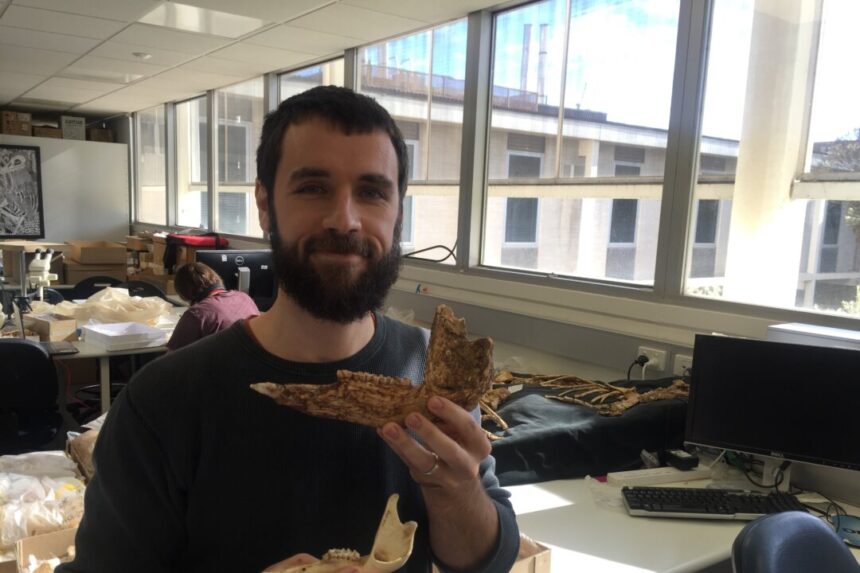The Protemnodon Viator, also found in New Guinea, is an animal that could weigh up to 170kg, making it the largest kangaroo ever discovered. The recent discovery of complete skeletons from an ancient species of giant kangaroo has led researchers to uncover three new species, with one species weighing twice as much as a modern-day male red kangaroo. The study, conducted by palaeontologists from Flinders University, focused on the extinct Protemnodon species and described their unique ways of hopping compared to today’s kangaroos. Protemnodon, a genus of extinct marsupials that lived during the Pleistocene epoch in Australia, belonged to a group known as diprotodontids, which includes giant kangaroos and wallabies. Fossils of Protemnodon were mainly found intact in Lake Callabonna in arid South Australia, forming the basis of the research led by Flinders University palaeontologist Isaac Kerr.
The study revealed that two of the ancient beasts resembled modern-day grey kangaroos, weighing around 50 kilograms but with a more robust appearance. However, the Protemnodon Viator, found in New Guinea, could weigh up to 170 kilograms, making it the largest known kangaroo, twice the size of today’s kangaroos. These ancient kangaroos were herbivorous and adapted to various environments, from forests to grasslands, with robust skulls and strong jaws suitable for a diet of tough vegetation.
One notable Protemnodon species, “Protemnodon anak,” known as the “giant wallaby,” was among the largest diprotodontids, estimated to weigh up to 130 kilograms. The extinction of Protemnodon and other large Australian marsupials is attributed to factors such as climate change, hunting, and habitat destruction. The Flinders researchers also identified two new species, Protemnodon mamkurra and Protemnodon dawsonae, each with distinct characteristics and habitats.
The study, based on data collected from museums across four countries, shed light on the unique locomotion patterns of these giant kangaroos. Mr. Kerr’s extensive research over five years culminated in a comprehensive report detailing the physiology and behaviors of Protemnodon species. The study challenges previous theories about the movement patterns of these ancient kangaroos, suggesting that some species may have moved differently, like a quokka or potoroo, bounding on four legs at times and hopping on two legs at others. The discovery of these new species highlights the diversity of habitats these kangaroos inhabited, ranging from arid central Australia to the forested mountains of Tasmania and New Guinea. Please rewrite the following sentence:
“The company is currently experiencing financial difficulties due to a decrease in sales.”
“The company is currently facing financial challenges as a result of declining sales.”
Source link





